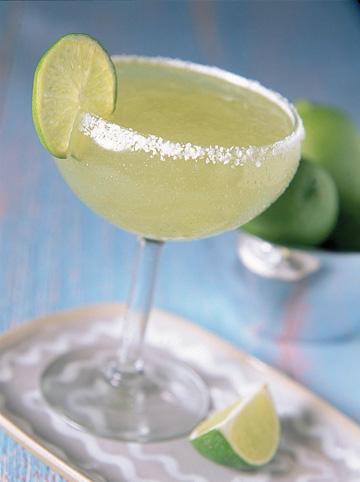By Miss Dixie
Last week on a perfect summer night, an annual event for a select group of music fans was celebrated in D.C. Parrotheads flocked to suburban Virginia for Jimmy Buffet’s annual tour and marked the event by downing margaritas in droves. While I am not a Buffet fan by any means, I am truly a margarita lover.
No other musician is so closely associated with a cocktail than Buffet and the margarita, after his continually-played “Margaritaville” tune hit the airwaves in 1977. Buffet’s ode to his island escape played a huge role in elevating the margarita to the number one tequila cocktail in the U.S. Its popularity in the states has surpassed its prominence in Mexico, where the Paloma is the preferred tipple.
Today, Buffet rakes in millions peddling pre-mixed bottled drinks and serving margaritas to fans in his vast of chain of theme-restaurants.
Unfortunately for the margarita, its place in the sun has greatly altered a drink that was once delightful and refreshing. These days, it is enjoyed by most in a ready-mixed, preprocessed or machine-dispensed form that vaguely resembles its origins.
As Buffet strummed his signature diddy last week, mullet-haired, Hawaiian-shirt wearing fans sang along holding foot-high Slurpee-like drinks housed in plastic guitar-shaped glasses purported by concessionaires to be frozen margaritas.
The original margarita is timeless mixture of tequila, orange liqueur (or triple sec) and lime juice. It is a textbook example of David Embury’s “Roll Your Own” theory that drinks are made up of three components – a liquor base, (tequila) a sweetener, (triple sec) and a sour (lime juice). Embury put forth this theory in 1948 book, “The Fine Art of Mixing Drinks.” Other cocktails that follow this formula include the daiquiri, whiskey sour and the sidecar.
With a recipe this simple, it’s hard to understand how the margarita ventured so far from it roots. For starters, instead of picking up a detergent-sized bottle of margarita mix, invest in an inexpensive lime squeezer and half dozen of limes. If you don’t want to be hassled by squeezing fresh fruit on the spot, make a batch ahead and refrigerate. It will make a world of difference.
While cheap varieties of triple sec abound, I suggest upping the ante. Many bartenders use Cointreau, a French liqueur, or Grand Mariner, a Cognac distilled with orange. My personal recommendation is Patron Citronage, a high-end triple sec made by one of the most respected tequila makers in the world.
Your choice of tequila also plays a big role. Tequila is a distilled spirit made from the blue agave plant. While some tequilas are 100 percent agave, those labeled “mixto” are made with a minimum of 51 percent with other sugars making up the remainder.
While many mixologists prefer silver or un-aged tequila for their mixability in cocktails, I prefer margaritas forged from a reposado tequila, which is aged in a barrel for up to a year. Slightly aged tequila provides an extra layer of flavor and complexity.
As for garnishes, the time-honored margarita should be served on the rocks (my apologies to the frozen drink lovers) and in a glass rimmed with salt. The pinch of salt brightens the fresh, sweet and sour flavor and adds a bit of twang.
Follow these simple steps and you can enjoy a simply sublime cocktail that has become an American summer tradition. The choice of background music is up to you.
Margarita
2 oz. 100-percent agave tequila
1 oz. triple sec, Citronage, Cointreau or Grand Marnier
1 oz. freshly squeezed lime juice
Salt for garnish


